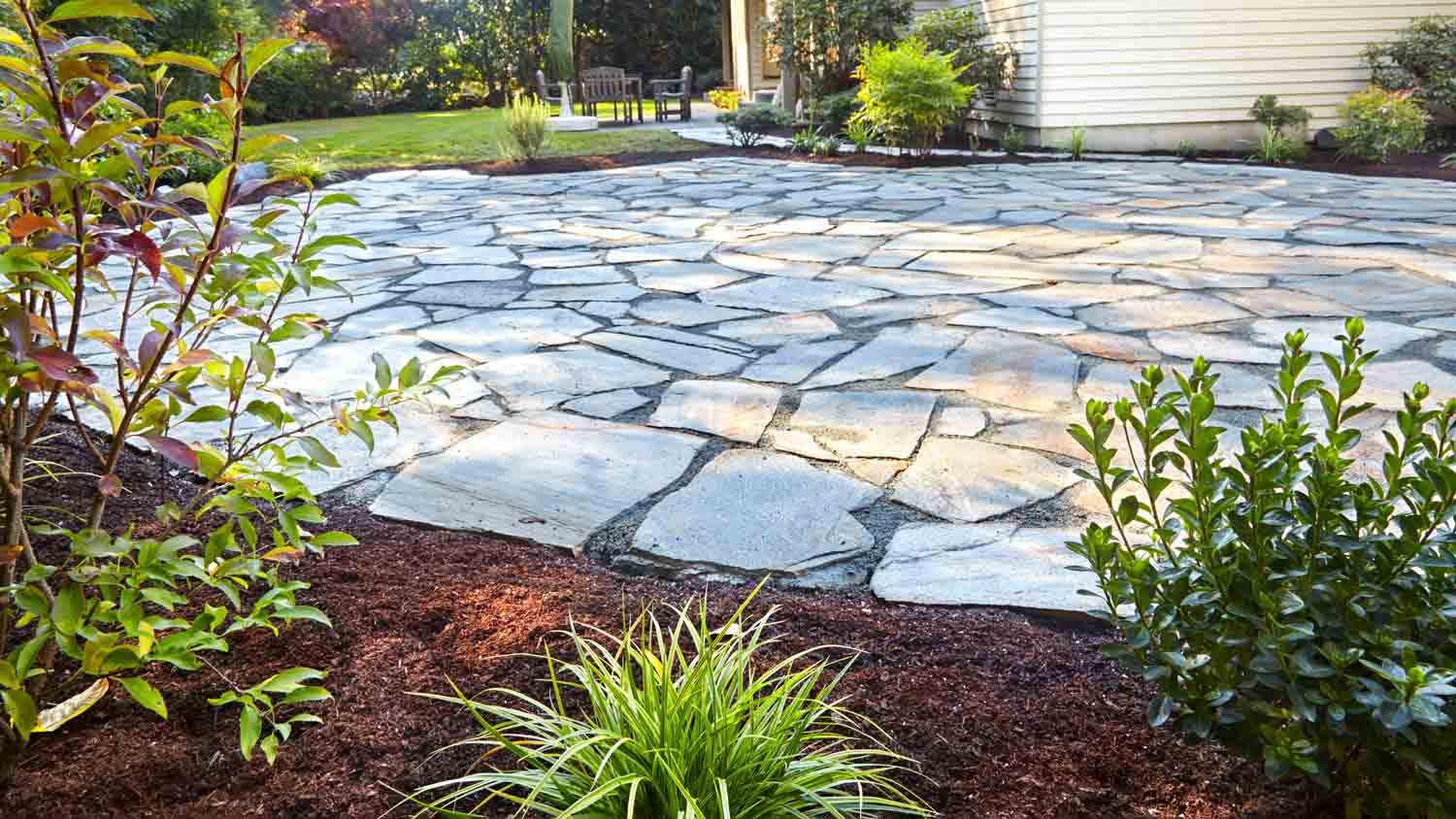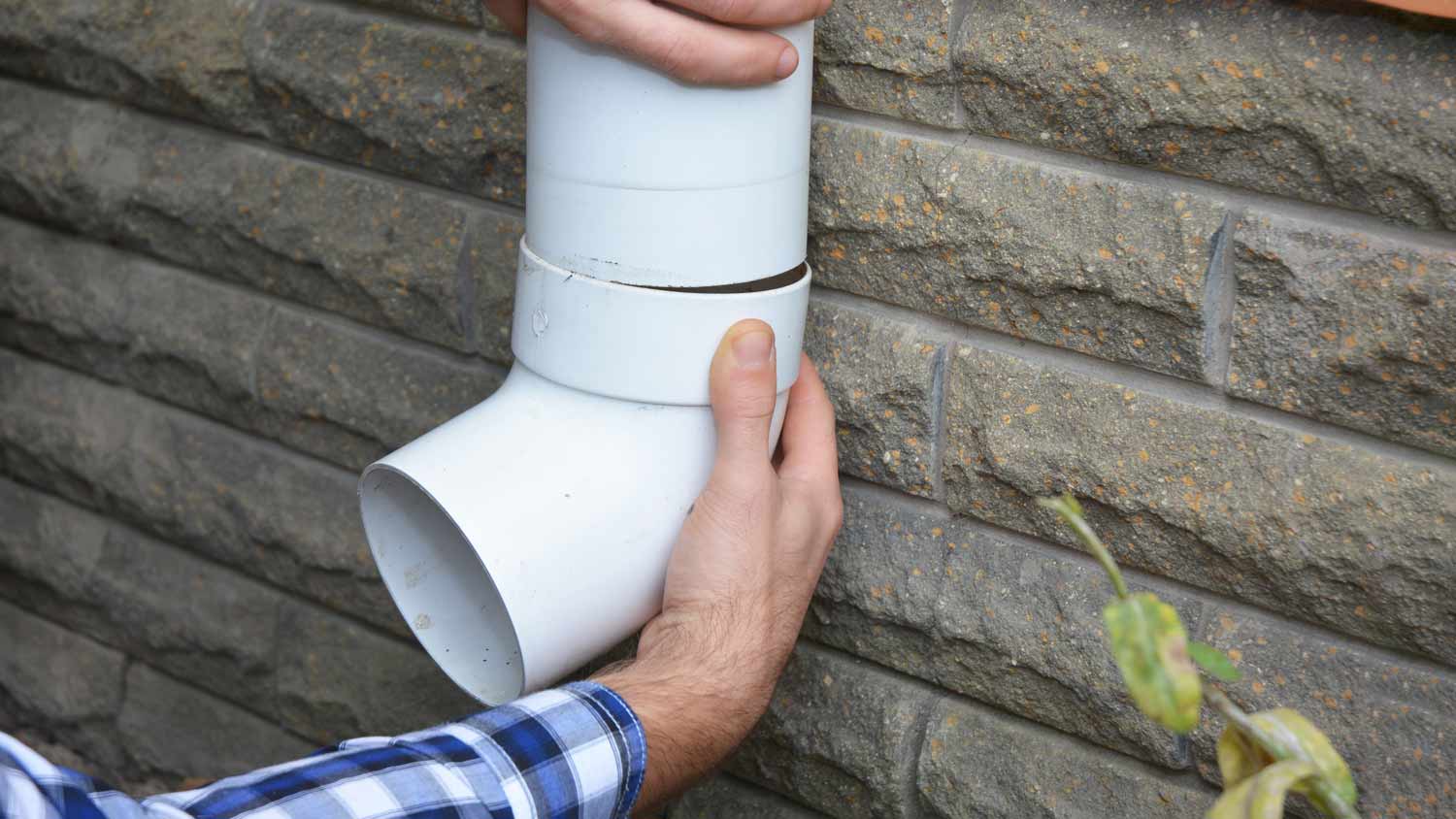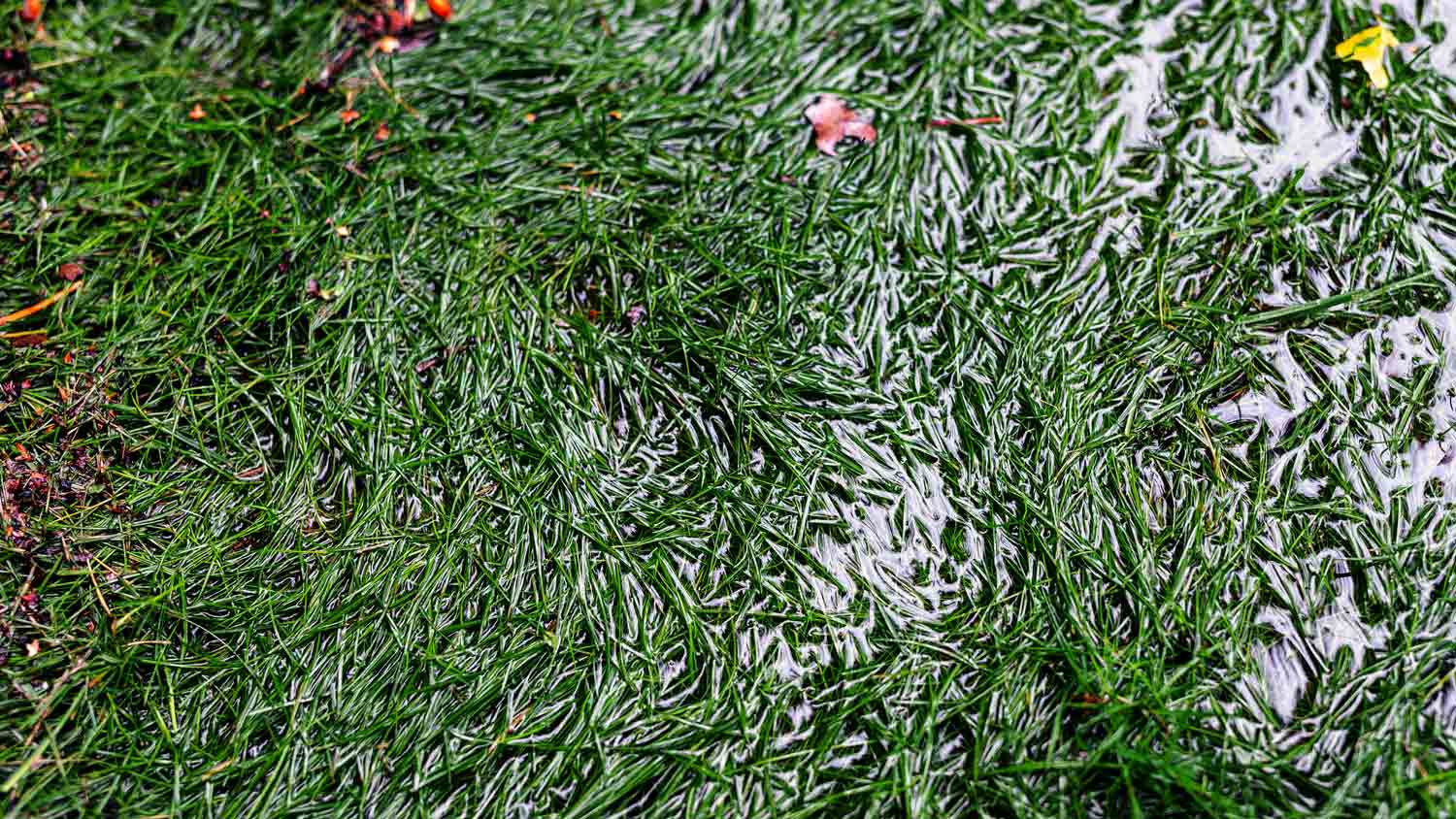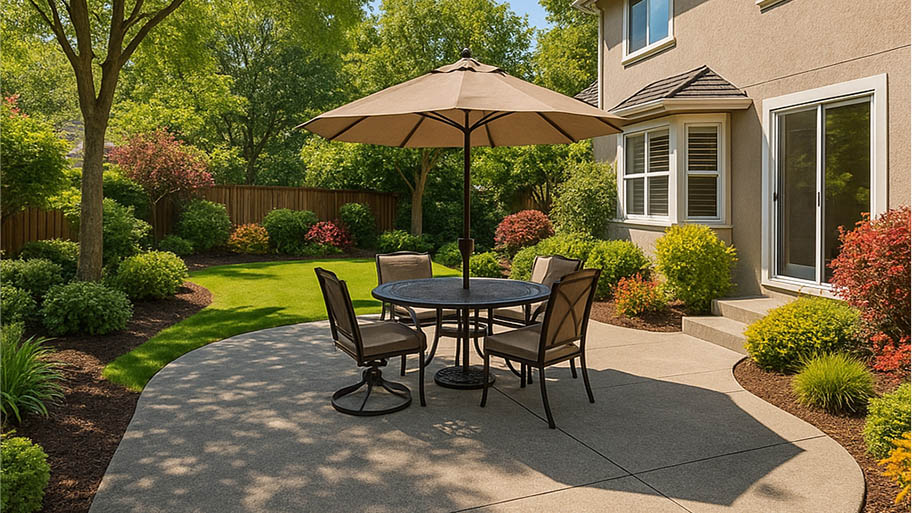
A porch can expand your living space and add curb appeal. Find out what to budget for the cost of a porch on your home with this guide.
When your backyard oasis needs a drawbridge, it’s time to talk drainage


Pooling water is one of the top signs of a patio drainage issue.
Water erosion around your patio can weaken it and cause sinking.
Unstable or uneven patio pavers are a sign of poor drainage.
Cold weather combined with poor drainage will crack concrete patios.
Some fixes are DIY-friendly, but serious problems usually need a pro.
If your outdoor slab sometimes feels like a moat, you may have patio drainage problems. Situations like these are particularly true in areas with heavy rainfall and poor grading. Older patio installations that lack proper water management can also have issues. Whether dealing with pooling water, sinking pavers, or erosion, identifying and fixing the root cause is key to keeping your outdoor space dry and tidy.
Pooling or standing water is one of the most obvious signs of a patio drainage issue. It often occurs after a rainstorm and may linger for hours or even days. Typically, the cost to repair patio problems ranges from $730 to $2,485, with severe drainage issues costing more, generally around $4,000 to $14,000.
Reslope the patio surface: A properly graded patio should slope away from the house at 1/4 inch per foot; if not, regrading or resurfacing may be needed.
Install a surface drain: A channel or trench drain at the patio's low point can quickly redirect water away.
Use permeable pavers: Swapping out non-porous materials for permeable ones allows water to soak through rather than collect on top.
When water consistently flows off your patio, it can start to erode the surrounding soil. Over time, this leads to exposed edges, sinking slabs, and a weakened patio structure.
If left unchecked, this problem can quickly turn cosmetic damage into something more serious, including replacement. Homeowners can expect their new concrete patio costs to go as high as $5,400, depending on size and labor costs in your area.
Reinforce edges with retaining blocks or edging stone: These materials act as physical barriers, slowing down runoff and holding soil in place.
Add landscaping fabric and gravel: Laying landscape fabric underneath gravel or river rock creates a stable border that absorbs some of the water’s force while minimizing soil washout.
Plant groundcover or grass: Installing low-maintenance, deep-rooted vegetation along the patio border reduces erosion, improves drainage, and can help your patio blend seamlessly with your yard’s design.

If your patio feels more like an unstable minefield than a gathering space, poor drainage is most likely impairing its stability. Water can displace the base material beneath pavers, leading to dips and trip hazards.
Lift and reset affected pavers: Remove the uneven pavers, add fresh gravel or sand to rebuild the base, and reinstall them level with the surrounding area.
Improve the base layer: Use compacted crushed stone with proper drainage characteristics to prevent future shifting.
Seal joints to reduce water infiltration: Polymeric sand can help keep water out while locking pavers.
Freeze-thaw cycles and poor drainage can cause concrete patios to crack, especially if water seeps in and expands when frozen. Small cracks under 1/4-inch wide can usually be easily repaired. But if you notice them growing, it's time to call a pro.
Fill minor cracks with a concrete patching compound: This prevents water from entering and worsening the damage.
Resurface the slab: A concrete resurfacer can restore appearance and function for widespread surface cracks.
Replace sections beyond repair: In cases where cracks are deep or structural, a full or partial replacement may be necessary, especially if rebar is exposed or rusting.

Sometimes, the most significant contributor to patio drainage problems isn’t the patio itself; it’s what’s above it.
Roof overhangs and downspouts that release water directly onto the patio can quickly overwhelm the surface, leading to pooling, erosion, or even damage to the patio materials. Concentrated runoff can undo even the best patio drainage design without redirection.
Extend or redirect downspouts: Use downspout extenders or splash blocks to carry water at least 4 to 6 feet away from the patio.
Install rain chains or diverters: Decorative and functional, rain chains slow the water flow and direct it gently into a drainage bed, rain barrel, or garden area instead of splashing directly onto the patio.
Add a gutter system: If your roof lacks gutters above the patio, installing them can make a massive difference by capturing rainwater and allowing you to control where it drains.
Create a dry well or rain garden: These features give excess water a place to go, especially if you’re dealing with high roof runoff.

Is your patio having drainage issues? Here are some warning signs to look out for:
Puddles that don’t drain after rain
Water pooling near your home’s foundation
Washed-out soil or exposed patio edges
Uneven, sunken, or rocking pavers
Visible cracks in concrete patios, especially with widening gaps or exposed rebar
Algae or mold growth on the surface
A musty smell near the patio area
Some patio drainage problems are straightforward enough for DIYers to tackle with a bit of time and effort. But there are times when working with a local deck repair specialist is the best course of action. These experts can assess the situation, design an effective drainage plan, and ensure it’s done to code. They are best for addressing:
Persistent water issues that return even after attempted fixes.
Structural concerns, like large cracks or patio settling.
Water infiltration into your home or crawl space.
Drainage that affects neighboring properties, which may involve legal considerations.
From average costs to expert advice, get all the answers you need to get your job done.

A porch can expand your living space and add curb appeal. Find out what to budget for the cost of a porch on your home with this guide.

Flagstone gives your outdoor space a gorgeous, rustic feel. Find out the cost of flagstone per square foot or per ton. Our expert cost guide helps you plan your budget for your flagstone project from walkways to patios to walls.

A concrete patio adds valuable outdoor living space to your home. Learn how much a concrete patio costs and which factors affect the project price.

Learn how to remove an old deck in this step-by-step guide. Deck removal is a challenging task and can take up to 10 hours.

Create an outdoor oasis by building a ground level deck with a fire pit. Follow this 10-step guide to constructing your own DIY deck and fire pit.

If you’re preparing to build or replace a deck or porch, here are the first questions you should be asking a contractor before hiring them for the project.